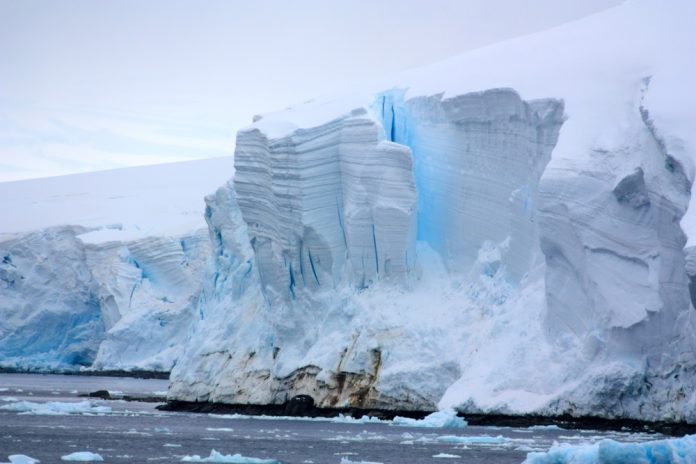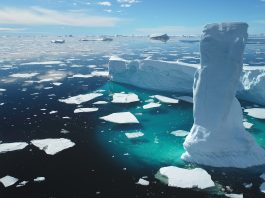A major study led by Dartmouth College researchers, involving over 50 climate scientists, has revealed alarming long-term projections about Antarctica’s ice sheet and its potential collapse due to carbon emissions.
The research highlights the risk of significant sea-level rise caused by Antarctic ice melt beyond 2100 if current emission levels continue.
The findings provide a crucial long-term perspective, predicting a rapid retreat of Antarctica’s glaciers after the 21st century.
Gradual Antarctic ice loss through 2100, then rapid acceleration
The research shows that Antarctica’s ice sheet will lose mass gradually throughout the 21st century. The study used data from 16 ice-sheet models, which collectively show a slow but steady increase in Antarctic ice loss through 2100. However, the models diverge significantly when projecting ice loss after 2100.
Beyond this point, the situation worsens dramatically. If current carbon emissions continue unchecked, glaciers in western Antarctica could retreat rapidly by 2200, raising global sea levels by as much as 5.5 feet. By 2300, the study even suggests the near-total collapse of Antarctica’s ice sheet is possible.
Hélène Seroussi, the study’s lead author and associate professor at Dartmouth’s Thayer School of Engineering, emphasised the lack of focus on long-term sea-level rise in climate discussions.
“When you talk to policymakers, they mostly focus on what will happen up to 2100,” Seroussi explained. “Our study provides longer-term projections that have been lacking. Beyond 2100, the long-term impact for the regions most susceptible to sea-level rise become amplified.”
The role of carbon emissions in ice sheet melting
The study compared Antarctica’s ice sheet under both high- and low-emission scenarios. The difference in sea-level rise between these two scenarios becomes far more pronounced after 2100.
Under high-emission scenarios, ice-sheet models predict irreversible ice loss in several basins in western Antarctica. These regions are particularly vulnerable to collapse, which would cause rapid and unstoppable melting.
Mathieu Morlighem, a Dartmouth professor and co-author of the study, stressed the importance of cutting carbon emissions now to prevent a disastrous future.
“While current carbon emissions have a modest impact on projections for this century, the difference between high- and low-emission scenarios becomes critical after 2100,” Morlighem said. ” These results confirm that it is critical to cut carbon emissions now to protect future generations.”
While the exact timing of these glacier retreats varied between models, the rapid pace of ice loss once initiated was consistent. Seroussi warned that once the retreat begins, “nothing can stop or slow it down,” signalling that immediate action is required to prevent irreversible damage.
Cutting emissions to save Antarctica
The study serves as a powerful call to action, highlighting the need for global efforts to reduce carbon emissions.
Although the most severe impacts of Antarctic ice melt are projected beyond 2100, the groundwork for these outcomes is being laid today. The researchers urge policymakers and global leaders to act swiftly to prevent the worst-case scenarios.
This research highlights the importance of global scientific collaboration. By combining multiple ice-sheet models, the study provides a clearer picture of Antarctica’s ice sheet future and where uncertainties still exist.
Seroussi hopes this collaboration will continue, allowing scientists to refine their models and focus on areas with the greatest uncertainties, including Greenland’s ice sheet.
As Antarctica’s ice sheet continues to melt, its effects will ripple across the globe, making immediate action essential.





